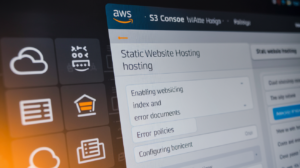Ever spent an entire weekend debugging a distributed database issue only to discover it’s not a bug but a fundamental trade-off you never considered? You’re not alone. Thousands of developers choose the wrong database architecture every day because nobody explained the CAP theorem in terms that actually make sense.
This post will break down the CAP theorem into practical decision points you can use immediately, without the academic fluff.
When building distributed systems, understanding the balance between Consistency, Availability, and Partition tolerance isn’t just theoretical—it’s the difference between a system that gracefully handles real-world chaos and one that crumbles during your biggest product launch.
But here’s what most CAP theorem explanations get wrong: they never tell you which trade-offs actually matter for your specific use case.
Understanding the CAP Theorem Fundamentals
What is CAP Theorem and Why It Matters
Ever tried having your cake and eating it too? The CAP theorem says you can’t—at least not with databases. Coined by Eric Brewer in 2000, this fundamental principle states that distributed systems can only guarantee two out of three properties: Consistency, Availability, and Partition tolerance. It’s the ultimate “pick two” scenario that forces architects to make hard trade-offs when designing systems that scale.
Consistency in Distributed Systems
Strong vs. Eventual Consistency Models
Think of consistency models as promises your database makes. Strong consistency guarantees you’ll always see the latest data, but comes with performance costs. Eventual consistency? It’s like telling your friends a story – they’ll all hear it eventually, but not at the exact same moment. This trade-off sits at the heart of distributed system design decisions.
Real-world Implications of Consistency Choices
Database consistency choices impact real businesses daily. Banking apps demand strong consistency—your balance must be accurate everywhere, instantly. But social media? A few seconds delay showing your friend’s new profile pic won’t crash their business. The key is matching consistency requirements to actual user expectations.
Use Cases Where Consistency is Non-negotiable
Some systems simply can’t compromise on consistency. Financial transactions, medical records, airline booking systems—these demand ironclad guarantees. When incorrect or stale data means lost money, compromised health outcomes, or double-booked seats, strong consistency isn’t just preferred—it’s absolutely essential.
Availability: Keeping Your System Running
A. Defining High Availability in Practical Terms
High availability isn’t just some fancy tech term – it’s about keeping your systems running when users need them. Think of it as your database’s reliability score. When we talk 99.999% uptime, we’re promising just minutes of downtime yearly. For many businesses, every second offline means lost money and frustrated customers.
B. Measuring and Monitoring Availability
Tracking availability requires more than occasional server checks. Smart teams implement real-time monitoring across multiple metrics:
- Service Level Agreements (SLAs): Define acceptable uptime thresholds
- Mean Time Between Failures (MTBF): Average time between system failures
- Mean Time To Recovery (MTTR): How quickly you bounce back
Your monitoring stack should alert before small issues become major outages. Historical data helps identify patterns that predict future availability challenges.
C. Business Impact of Availability Decisions
Availability choices directly hit your bottom line. Consider these real-world impacts:
| Availability Level | Downtime Per Year | Potential Business Impact |
|---|---|---|
| 99% (“two nines”) | 87.6 hours | Significant revenue loss, customer churn |
| 99.9% (“three nines”) | 8.76 hours | Moderate disruption, some customer complaints |
| 99.999% (“five nines”) | 5.26 minutes | Minimal impact, premium service level |
E-commerce platforms might prioritize availability during peak shopping seasons, while financial systems might value consistency for transaction accuracy over constant availability.
D. Strategies for Maximizing Uptime While Managing Trade-offs
You can’t have perfect availability without compromises. Smart strategies include:
- Geographic redundancy: Distribute across multiple regions to survive regional outages
- Load balancing: Distribute traffic to prevent overloading single nodes
- Graceful degradation: Keep core functions running even when non-critical services fail
- Circuit breakers: Prevent cascading failures by isolating problematic services
The key isn’t pursuing perfect availability at all costs – it’s making intentional trade-offs that align with your business requirements and user expectations.
Partition Tolerance: Handling Network Failures
A. Common Partition Scenarios in Modern Systems
Network partitions happen more than you think. Cloud environments face regional outages, datacenter connections drop, and microservices get isolated during traffic spikes. Even your fancy Kubernetes cluster isn’t immune when nodes can’t talk to each other. These aren’t theoretical problems—they’re Tuesday afternoon emergencies waiting to happen.
B. Designing Systems that Survive Network Partitions
Don’t wait for disaster to strike. Smart systems use redundancy across multiple zones, employ circuit breakers to fail gracefully, and implement local caching strategies. The real magic happens when you design assuming failure: message queues buffer requests, conflict resolution strategies handle divergence, and proper timeouts prevent cascading failures across your architecture.
C. Recovery Mechanisms After Partition Events
When networks heal, the real work begins. Effective recovery needs automated conflict detection, versioning strategies for data reconciliation, and event logs to replay missed operations. The best systems track divergence metrics during partitions and prioritize healing critical paths first. Remember: recovery speed directly impacts your business continuity—plan for it before you need it.
CP Databases: Prioritizing Consistency and Partition Tolerance
Key Features and Benefits of CP Databases
CP databases shine when you absolutely can’t have wrong data. They’ll pause operations during network issues rather than risk inconsistency. Think of them as the accountants of databases – they’d rather stop everything than have the numbers not add up. This makes them perfect for financial systems and anything where accuracy trumps immediate access.
Popular CP Database Options
MongoDB, when configured for strong consistency, exemplifies the CP model brilliantly. It sacrifices some availability during partitions to ensure you never see stale data. HBase follows suit, offering strong consistency guarantees while maintaining partition tolerance. Redis Cluster and Google Cloud Spanner round out the top CP contenders, each with their own approaches to the consistency-partition tolerance balance.
Industry Scenarios Where CP Databases Excel
Banking systems can’t afford to show you the wrong account balance – even for a second. That’s why they love CP databases. Same goes for stock trading platforms where milliseconds and accuracy matter. Healthcare systems storing patient records and inventory management systems also benefit tremendously. Any situation where “eventually correct” isn’t good enough calls for a CP approach.
Implementation Challenges and Solutions
Implementing CP databases isn’t all sunshine. You’ll face availability tradeoffs during network hiccups – that’s the price of consistency. Smart application design can help by building in graceful degradation modes. Proper network infrastructure with redundant connections minimizes partition events. Meanwhile, techniques like write-ahead logging and consensus protocols help maintain data integrity even when things get rocky.
AP Databases: Balancing Availability and Partition Tolerance
AP Databases: Balancing Availability and Partition Tolerance
A. When to Choose AP Over Other Options
You’re staring at your system requirements, wondering which database fits best. AP databases shine when your users can’t tolerate downtime, but can live with slightly stale data. Think e-commerce during Black Friday – better to show yesterday’s inventory than no inventory at all. The business impact of downtime outweighs perfect consistency.
B. Leading AP Database Solutions (Cassandra, CouchDB, etc.)
Apache Cassandra stands tall in the AP database world. Built by Facebook engineers who understood scale, it handles massive workloads across global data centers without breaking a sweat. CouchDB brings a different flavor to the table with its sync capabilities – perfect for mobile apps that need offline functionality. DynamoDB from AWS delivers impressive performance with minimal management headaches.
| Database | Best For | Notable Users |
|---|---|---|
| Cassandra | Massive scale, write-heavy workloads | Netflix, Instagram |
| CouchDB | Mobile apps, offline-first design | BBC, Amadeus |
| DynamoDB | Serverless architectures | Lyft, Airbnb |
C. Handling Eventual Consistency in Application Design
Eventual consistency isn’t a bug—it’s a feature you design around. Smart application architects use techniques like version vectors to track data lineage. They implement conflict resolution strategies (last-write-wins or custom merge logic) at the application layer. Some even leverage CRDTs (Conflict-free Replicated Data Types) to mathematically guarantee convergence without central coordination.
D. Success Stories: Organizations Thriving with AP Systems
Netflix streams billions of hours of content monthly with Cassandra handling the load. Their engineers sleep soundly knowing regional outages won’t stop global binge-watching. Spotify tracks your listening habits across devices with eventual consistency—nobody notices if your play count updates a few seconds late. These companies don’t just tolerate AP systems; they thrive because of them.
CA Systems: The Theoretical Third Option
Can CA Systems Exist in Real-world Networks?
The truth? They can’t. Not really. CA systems sacrifice partition tolerance, which means they fall apart when network issues happen. And network issues always happen eventually. That’s why true CA systems are unicorns – mythical in distributed computing. The moment servers can’t talk to each other, you’re forced to choose: consistency or availability.
Single-node Systems and Their Limitations
A single database node technically achieves both consistency and availability when there’s no network to worry about. One server, one truth. But this approach hits a wall fast. No redundancy means one hardware failure brings everything down. No distributed processing means limited scalability. And forget about geographic distribution – latency would be brutal.
Hybrid Approaches that Approximate CA Behavior
Smart engineers have crafted clever workarounds. Some systems use consensus protocols like Paxos that maintain strong consistency while maximizing availability during “normal” operations. Others employ multi-master replication with conflict resolution. These aren’t true CA systems, but they manage the CAP tradeoffs intelligently enough that they feel like it under specific conditions.
Making the Right Database Choice for Your Use Case
Evaluating Your System Requirements Against CAP Constraints
Ever tried picking the perfect database and felt totally lost? You’re not alone. The key is matching your actual needs to what each database can deliver under CAP constraints. Need instant consistency for financial transactions? Or can your social media app handle eventual consistency for better availability?
Decision Framework for Database Selection
Let’s cut through the confusion with a simple framework. Start by ranking your priorities: consistency, availability, or partition tolerance? If consistent data is non-negotiable (think banking), lean toward CP systems like MongoDB. Need always-on services? AP databases like Cassandra might be your best friend.
Mixing Different Database Types in a Single Architecture
Who says you need to pick just one database? Modern architectures often combine multiple database types for different functions. Your user profiles might live in MongoDB for consistency, while that activity feed performs better in Cassandra. It’s like having specialized tools in your toolbox rather than one mediocre Swiss Army knife.
Future-proofing: Anticipating Changing Requirements
The database you choose today needs to handle tomorrow’s problems too. Think about your growth trajectory and how your consistency needs might shift. Build flexibility into your architecture from day one. Many teams start with something simple like PostgreSQL, then gradually introduce specialized databases as specific needs emerge.
The CAP theorem serves as a crucial guide when navigating the complex landscape of distributed database systems. As we’ve explored, understanding the tradeoffs between consistency, availability, and partition tolerance allows engineers to make informed decisions based on specific application requirements. CP databases like MongoDB and HBase prioritize data accuracy during network partitions, while AP systems such as Cassandra and CouchDB maintain system availability at the cost of temporary inconsistencies. Although CA systems exist theoretically, real-world distributed environments inevitably face network partitions.
When selecting a database for your distributed system, carefully assess your application’s specific needs. Consider factors like your tolerance for stale data, expected network reliability, and recovery requirements. Remember that no single database solution is perfect for all scenarios—the right choice depends on your unique priorities and constraints. By thoughtfully evaluating these tradeoffs, you can build resilient distributed systems that effectively balance the competing demands of the CAP theorem while meeting your application’s specific requirements.




















